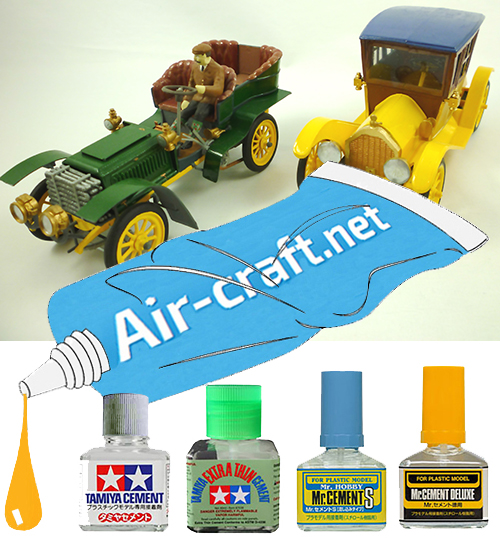Adhesives aren’t as simple as they used to be. Good old basic glue has developed greatly and hobby enthusiasts, especially modellers, will use a varied range of adhesives according to the materials they are working with.
 These days there is an adhesive for every kind of task and Air-craft.net stock a range of adhesives and fillers for modelling and crafting, including plastic weld adhesives, Tamiya adhesives, Mr Hobby adhesives and fillers and the Flex-I-File range of adhesive applicators, including the Touch-N-Flow.
These days there is an adhesive for every kind of task and Air-craft.net stock a range of adhesives and fillers for modelling and crafting, including plastic weld adhesives, Tamiya adhesives, Mr Hobby adhesives and fillers and the Flex-I-File range of adhesive applicators, including the Touch-N-Flow.
Tamiya’s classic liquid cement is used for plastic model kits and their Extra Thin Liquid Cement is designed for those small components or application by capillary action.
Modern adhesives are all based on advanced chemical process. The most common adhesive you will come across today is known as ‘Superglue’ but to the modellers as CA (Cyanoacrylate) and as often used as a filler as an adhesive. It is good for joining wood, plastic, metal, glass, ceramic, fabric, rubber, fibreglass, carbon fibre or combinations; in fact most things in everyday life as well as in modelling. CA adhesives come in different thicknesses or viscosity and in different formulations according to the material it is to be used on. That’s the hazard as we get used to their ‘wonder glue’ properties and expect them to stick together just about anything.
In fact, for greatest effectiveness most adhesives are specifically formulated to stick a particular material. So be careful to use the right one as the wrong choice can either be ineffective, or even worse, literally melt whatever you are working on. And if that’s a model that has already occupied many hours of your time you are not going to be a happy bunny.
Always follow the model manufacturers’ recommendations about the type of adhesive to use or if there are no recommendations available then get in touch at Air-craft.net and we should be able to help.
If in any doubt follow that old standby rule and ‘test on a small area first’.
Comments are closed.